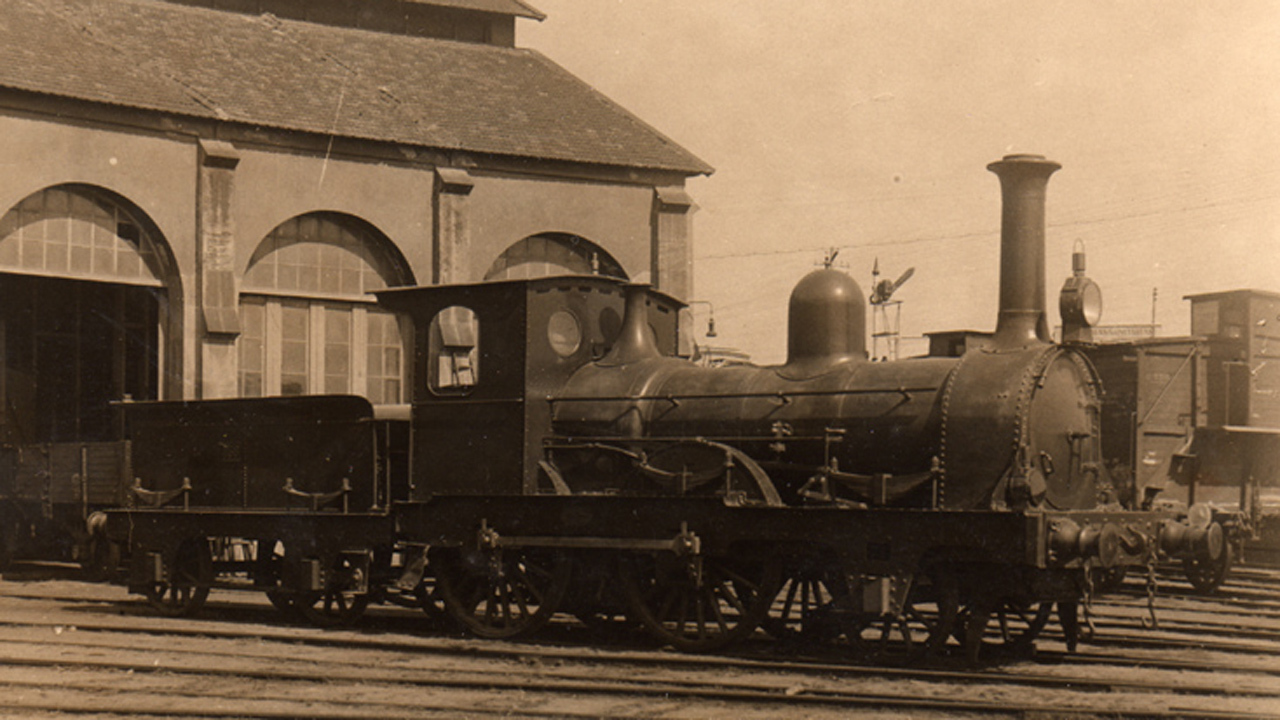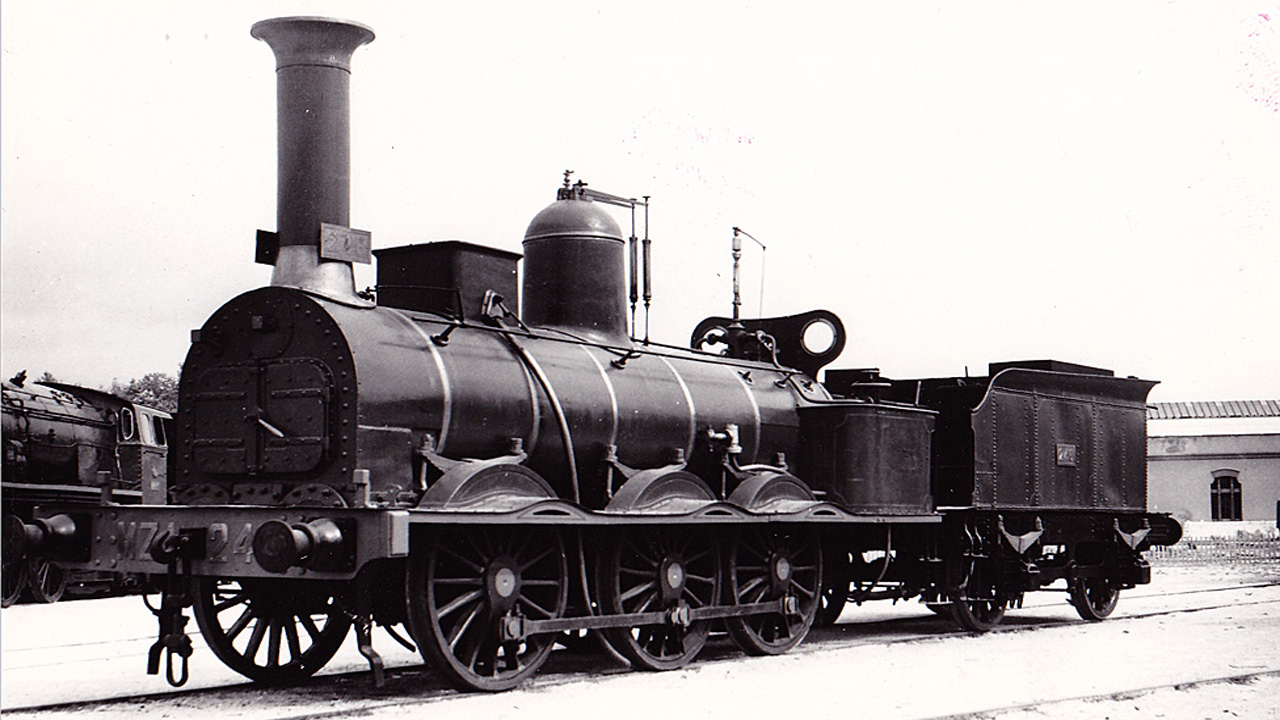
First American "Carolina" locomotive that arrived in Vilanova, 1881

Scheme of the "Rogers" locomotive, 1880

TBF "Carolina" locomotive detail

A locomotive "Martorell" at the depot of the Clot, 1926

"Martorell" locomotive at the XIX International Morop Congress, 1972

"Mamut" locomotive at the XIX International Morop Congress, 1972
12 - The first locomotives. The drivers’ and stokers’ working conditions
Inside the Rotonda (Roundhouse) building, beside the “Mataró,”
we can see some of the first original locomotives that still
exist, such as the 1854 “Martorell,” which is the oldest
existing one in Spain. Its front bears the initials of the
company to which it belonged and its assigned number. Before
the establishment of Renfe in 1941, each company used its
own numbering to identify its locomotives. This small
locomotive was known as the “Martorell” because it was
initially operated between this Catalonian locality and
Barcelona.
The first steam locomotives in the 19th century were very
small and limited to the short trips that each private
company operated as a concession. The job of drivers and
stokers was very hard due to the small space in which they
had to work, without any protection from the weather, in
blazing heat or freezing cold, while breathing in smoke and
soot. You can enter the cabin of the 1857 “Mamut”
locomotive, located to the right, and imagine how gruelling
it must have been to drive these early steam locomotives.
These first customised locomotives that became obsolete were
used to move other vehicles around in stations and depots,
which they did for many years. This usefulness saved many of
them from disappearing.
Railway companies gradually grew and their routes were
merged together, which required larger locomotives to cover
greater distances. The increase in distance was proportional
to the harshness of the railwaymen’s working conditions,
even when the steam-engine cabins were covered. Their
working day could last for twelve, fourteen or even more
hours –whatever was needed for the train to reach its
destination. A locomotive could consume 10 tons of coal in a
day, even more if it was poor quality, which was frequent.
In this case, the stoker constantly had to stoke the fire to
keep it burning. They could not even rest when the train
stopped, since they had to grease the connecting rods and
engine components, and fill up the water tank. In the
Museum, you can enter the cabins of large locomotives such
as the “Mallet”, the “Santa Fe” or the “Mikado,” the three
ones restored by the Association of Volunteers.


